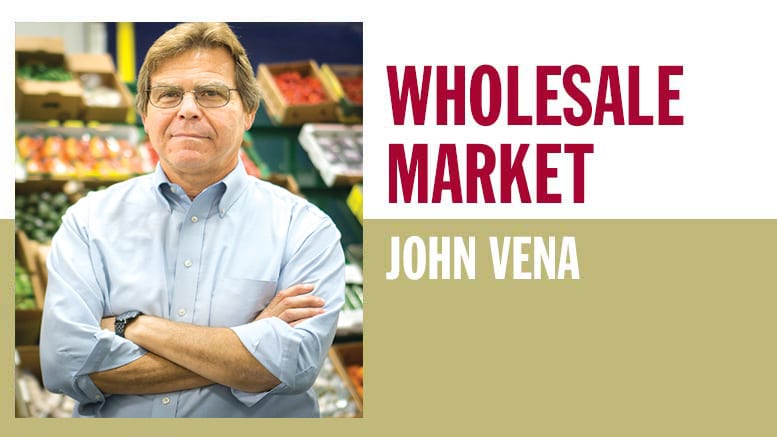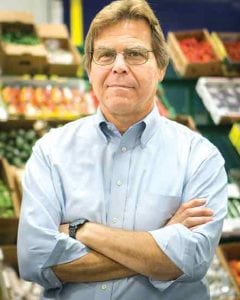Managing Change In A Maturing Terminal Market
May 20, 2019 | 6 min to read
Terminal markets, once characterized by quaint characters and simple operations, have shifted dramatically, particularly in the Philadelphia Wholesale Produce Market. A shift began in 2000, but now only 22 merchants remain, creating a landscape dominated by larger firms. The reduction raises questions about the viability and character of terminal markets, prompting debates over merchant diversity, operational costs, and the potential loss of smaller enterprises. As the industry evolves, nostalgia for the past may have to yield to practical business adaptations.

 Produce terminal markets used to be really simple operations fueled by supply and demand and staffed by quaint, colorful characters — usually men — well-suited to working very physical jobs in the middle of the night. Customers typically traveled to the market in their own vehicles to purchase and load product.
Produce terminal markets used to be really simple operations fueled by supply and demand and staffed by quaint, colorful characters — usually men — well-suited to working very physical jobs in the middle of the night. Customers typically traveled to the market in their own vehicles to purchase and load product.
Our old market on Galloway Street was designed and built in 1959 without refrigeration. No one saw the need for such expensive equipment. It was a “seller’s market,” and services offered were limited to basics such as making the sale and watching customers pick up their purchases to load their trucks.
Terminal markets are a segment of the produce industry where change typically comes at glacial speed. Our Market in Philadelphia was no exception. For many years, the produce industry has been evolving, but like the proverbial frog in the pot, as things were heating up around us, we just didn’t realize it.
In 2000, we began a belated initiative to catch up with the needs of our merchants and our customers. At that time, there were 36 merchants operating in the Market, the largest among us occupied three or four units.
In June 2011, just 26 merchants moved into our current facility on Essington Avenue in southwest Philadelphia. Three merchants in the new building leased five or six units each. Since our opening day, we have lost and gained merchants through business failures and the deaths of principles. Established firms from outside our Market joined us but found they didn’t like the climate in our facility and moved out. Fortunately, a couple of new companies comprised of entrepreneurs from within the Market have found success and grown.
Today, there are only 22 merchants in the Market, but we are at full capacity. This attrition in the number of merchants has allowed for facility growth among the survivors. The larger businesses now occupy from six to nine units. In fact, our bylaws cap our leases at nine units per merchant. It took 10 years and a miracle to build our current facility; it’s unlikely we will be adding new units. And there’s the rub, because recently our merchants have been asked to consider an increase to our unit limit. Of course, this question anticipates further depletion of our merchant ranks and continued growth for survivors.
As a member of the last generation of quaint, colorful men to work in our Market, this is a conundrum for me. In my heart, I feel that a strong terminal market requires a certain merchant diversity. I have always thought that to succeed, we must maintain a facility that encourages many different businesses, offering many different products, staffed by interesting, enthusiastic characters in order to draw in customers. However, the attrition in our ranks has created opportunity. My company and others in the Market have been able to increase our operational footprint dramatically, because of the shrinking number of competitors. As business owners in our Market consider their future and elect to grow or retire, the loss of merchants may continue.
Looking ahead, the shareholders of our Market will have to answer many questions. Certainly shrinking numbers of merchants challenge the traditional concept of the terminal market. Is this definition still valid, and does it still truly serve the best interests of the customers and the merchants? How can we best manage the allocation of space in our facility to maintain its character as a market? Fewer, larger firms would have an easier time developing the resources required to meet customers’ demands.
There are three points to consider here. First, what number of merchants constitutes a viable “marketplace” perceived by customers to be the place they can get the best deals? Second, is the terminal market as we know it the best model for serving the independent retailer and small to mid-sized foodservice distributor? Third, operational cost in a market is always amplified by the need to maintain the common areas required for customer service activities. With a fixed number of units, what percentage of our facility can be entrusted to one company? The loss of a large tenant increases the heavy burden of shared costs for all the services a building such as ours requires.
And what about new faces? We have had successful startups join our group of merchants. It happened at a time when the Market had vacant units and the cost of entry was very reasonable. Allowing large established firms to easily and permanently absorb more units may prevent the enlistment of cash-strapped, but hard-working newcomers. Larger, stronger firms typically take a larger piece of the business pie. Will that push smaller operators toward failure or, at the very least, to choose early retirement or a career change? Either way, our merchant roster is cut. But any good philosopher will tell you that change is inevitable. We can’t stop it. We can only try to manage it. Romantic notions of what a terminal market is supposed to be, held by quaint characters like me, are likely better off relegated to stories told over a cocktail at industry functions … not held as a standard for future development.
John Vena is the owner of John Vena Inc., a family owned and operated produce business located in the Philadelphia Wholesale Produce Market. Founded in 1919, the company is a fourth generation family business bearing the name of John Vena’s grandfather.
5 of 9 article in Produce Business May 2019

